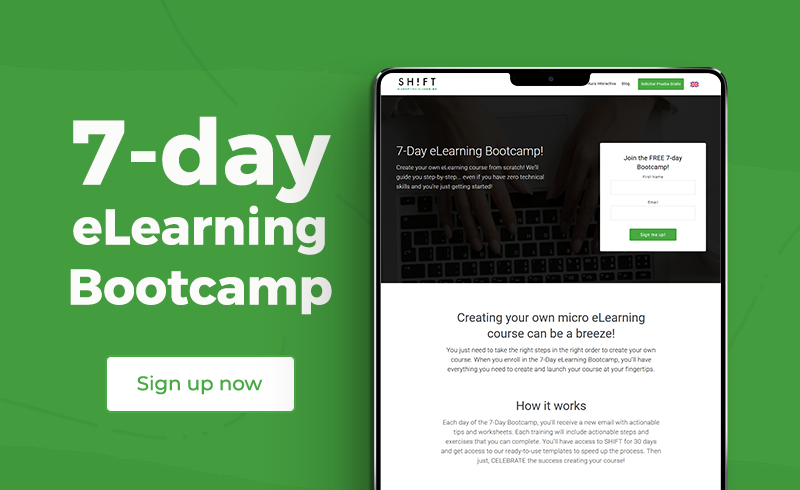Don't begin an eLearning course without a clear path in mind; like any other effort, planning is key. For that purpose, a storyboard can come in very handy.
What's a storyboard?
The term "storyboard" comes from movie production, where creators sketch out a film in a series of still images. An eLearning storyboard is the blueprint of the course, like a lesson plan - except a storyboard doesn't describe just general content, but everything else as well, from graphics to video.
Why do I need one? Storyboards provide many benefits, of which these are just a few:
- Sequence instruction and show how different elements relate and fit together;
- Generate a clear plan for project management;
- Make sure you, clients, and team members are all on the same page;
- Document changes and previous ideas.
The Anatomy of a Storyboard
While you can of course use whatever format works best for you, there are some elements that really need to be present in order for an eLearning storyboard to work effectively.
- Header/Title: Project name, Course name, Date, and all other identifying information you need to keep your storyboards sorted.
- Screen Text: The text, in full, as it appears onscreen. Include instructions that students will see, like "Click NEXT to learn more". This lets subject matter experts see exactly what will be presented.
- Audio: Narration that goes along with each screen (plus audio notes).
- Navigation/Interaction Instructions: Everything a learner can or should do on the screen. This is a big one, but it's important for everyone to know how the lesson will be interacted with. Include any interactive trees like quizzes, along with different responses that will display. Also make sure to specify how learners get from this page to the next one. Programming logic form can be a good asset here: use if/then statements whenever possible.
- Graphic/Media: Images or animations, as well as their positioning on the screen. You can even think about adding thumbnail sketches in place of images rather than describing them verbally.
In general, your eLearning storyboard should be as detailed and specific as possible. You want to convey your idea to other team members, so give them everything they need to bring it to life.
Read more: Why Storyboarding Is Crucial to the eLearning Design Process
The Storyboarding Process:
The creation of the eLearning storyboard itself is up to you, but here is a guide to important questions to answer before buckling down to get creative:
Needs Assessment: What is the target audience? What is their skill level? What pedagogical strategies have been working for this group in the past?
Organizing Materials: What do you have to work with? What learning material has been provided for you? What files are available? How are you going to break the course into modules?
Defining Goals: What is your single objective? Do you have any secondary objectives? (Check back here when you think you're done with your storyboard; if the main goal isn't achieved, you aren't as done as you thought.)
Selecting Instructional Technique: Do you want to present this content through storytelling, a scenario-based approach, or some other method?
Content Sequence: What order do things go in? What topics need to come before or after others? Are there any units or modules that fit together more naturally than others?
This may sound like a lot of work, and it is; storyboarding in full may be too involved for small or solo projects. But in larger ones, the initial effort is more than repaid by increased efficiency later on.
Also read:
6 Mistakes to Avoid When Writing an eLearning Storyboard
The 3 Types of eLearning Storyboards and When To Use Them
Summing Up In An Infographic:

Share this Image On Your Site
Start reading these helpful articles:
- Storytelling Basics for eLearning by Jane Bozarth
- 8 Steps for an Awesome Storyboard [Infographic]
- Best Practices for Designing a Storyboard for eLearning


